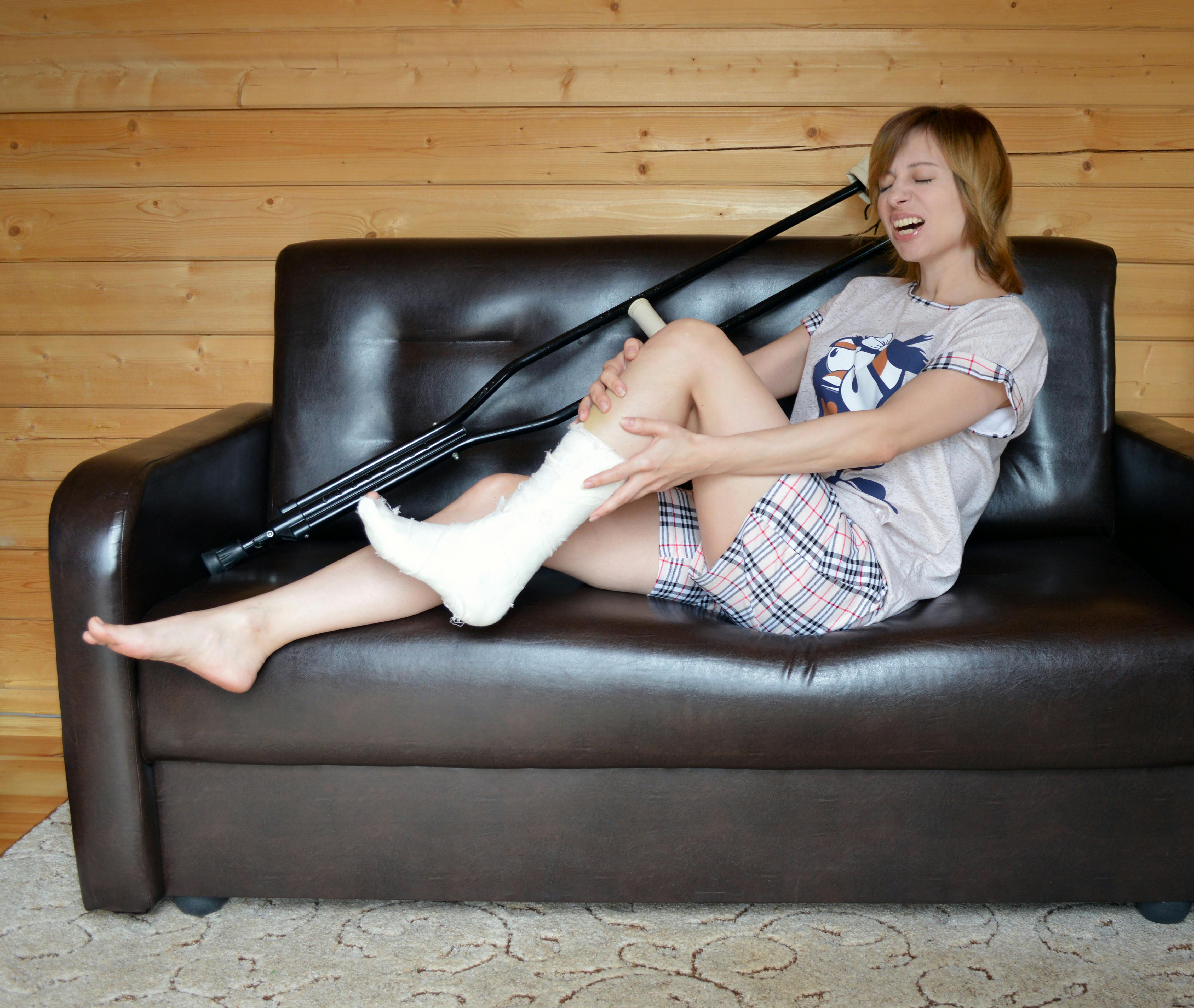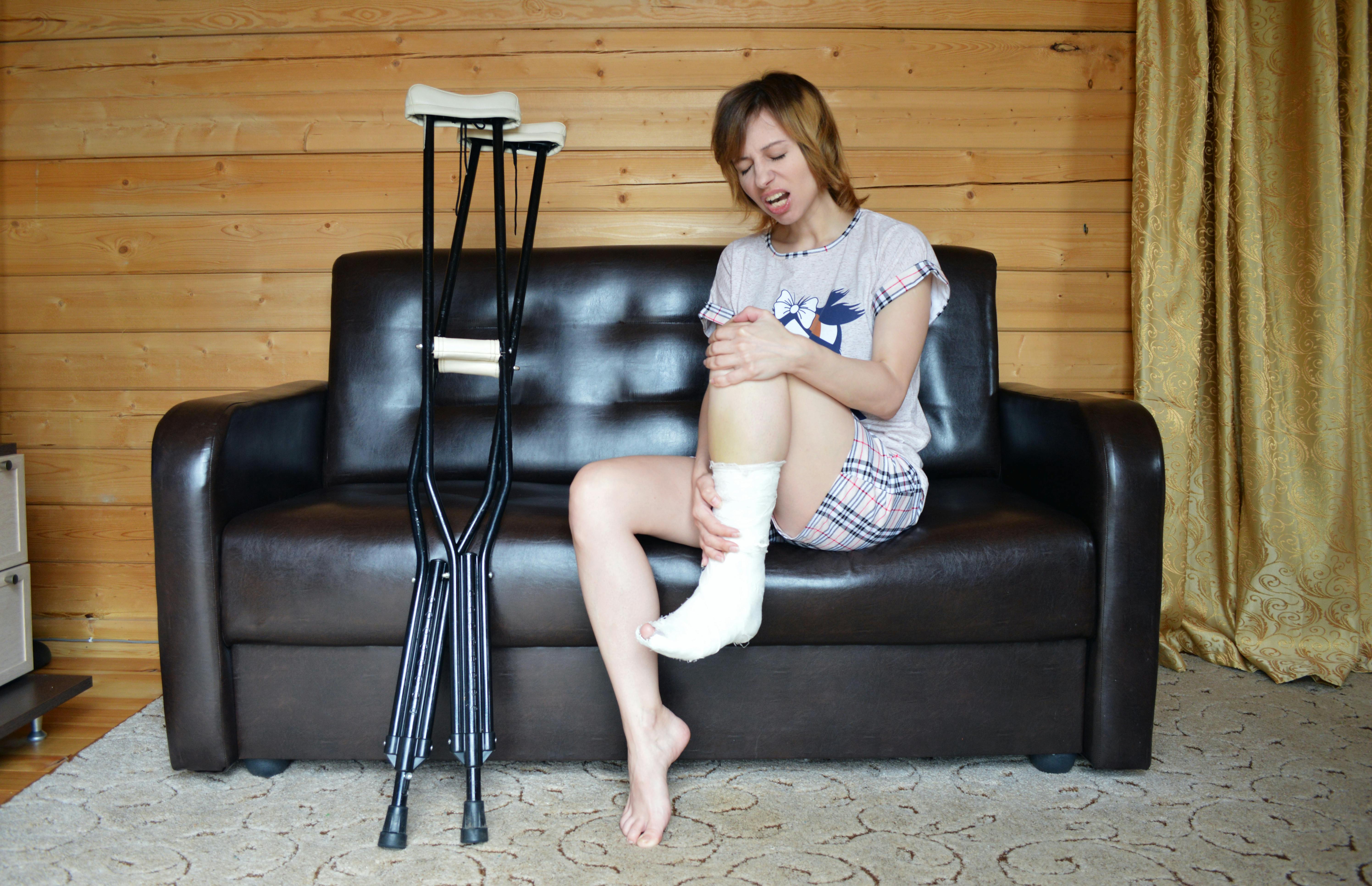Bone demineralization is a process in which minerals are removed from the bones, resulting in weakened and brittle bones. This condition is usually caused by a lack of calcium and other essential minerals in the diet, as well as certain diseases or medication use. While the process of bone demineralization may not be painful in itself, it can lead to pain if left untreated.Bone demineralization is caused by nutrient deficiencies, particularly of calcium, vitamin D and magnesium. It can also be caused by a variety of medical conditions such as osteoporosis, certain cancers and kidney disease. In addition, excessive alcohol use and smoking can contribute to bone demineralization.
What Are The Symptoms Of Bone Demineralization?
Bone demineralization, also known as osteopenia, is a condition in which the bones have lost density or mineral content. This can be caused by a variety of factors, including: poor nutrition, lack of physical activity, certain medications and diseases that can lead to an imbalance in the body’s calcium levels. Symptoms of bone demineralization can vary depending on the level of bone loss and the underlying cause. Common symptoms include:
– Pain or tenderness in the bones or joints
– Increased risk of fractures
– Low bone density or thinning of bone tissue
– Decreased muscle strength
– Loss of height over time
– Difficulty walking due to weakened bones and muscles
In some cases, bone demineralization may progress to a more serious condition called osteoporosis. Osteoporosis is when the bones become so brittle and weak that they fracture easily. Symptoms of osteoporosis include:
– Significant loss of height over time
– Severe back pain caused by fractured vertebrae
– Fragile bones and frequent fractures even after minor falls or bumps
If you are experiencing any of these symptoms, it is important to see your doctor for diagnosis and treatment. Your doctor will take your medical history and do a physical exam to check for any signs of bone loss. They may also order blood tests, X-rays or other imaging tests to look for signs of demineralization in your bones. Treatment for bone demineralization typically involves lifestyle changes such as eating a balanced diet rich in calcium and vitamin D, getting regular exercise, quitting smoking if you smoke, and taking medications if necessary.
What Are The Risks Of Bone Demineralization?
Bone demineralization is a serious medical condition that can cause a wide range of health problems. It occurs when the bones become weakened and lose their normal mineral content. This can lead to an increased risk for fractures, osteoporosis, and other bone-related issues. In some cases, it can even lead to death. It is important to understand the risks associated with bone demineralization and take steps to prevent it from occurring.
The most common cause of bone demineralization is inadequate calcium intake. Calcium is essential for strong bones and if your diet does not provide enough of this mineral, your bones can become weakened over time. Other causes include certain medications, such as corticosteroids or diuretics, as well as chronic diseases like kidney failure or rheumatoid arthritis.
The major risk associated with bone demineralization is an increased likelihood of fractures. This occurs because the weakened bones are more prone to breaking when subjected to pressure or impact. Additionally, bone demineralization can also increase the risk of osteoporosis due to a decrease in bone density. Osteoporosis increases the risk for fractures even further and can also lead to other complications such as back pain or spinal cord compression.
Other risks associated with bone demineralization include an increased risk for infections in the joints due to weakened cartilage and a decrease in height due to vertebral compression fractures in the spine. If left untreated, these conditions can be very painful and also have serious repercussions on one’s quality of life.
In order to reduce the risks associated with bone demineralization, it is important to ensure that you are consuming enough calcium through dietary sources or supplementation, depending on your individual needs. Additionally, avoiding certain medications that could contribute to bone loss may be beneficial as well as controlling any underlying chronic diseases that could be causing it. Regular exercise can also help strengthen bones and reduce the risk of fractures or other complications related to this condition.
What Are The Treatments For Bone Demineralization?
Bone demineralization is a condition in which the bones become brittle and weak due to a loss of minerals, especially calcium. Treatment for this condition depends on the underlying cause of the demineralization. If it is due to a dietary deficiency, then supplements and diet changes may be recommended. If it is caused by certain medical conditions such as kidney disease, diabetes, or hypothyroidism, then treating these conditions may help to restore bone mineral density. In some cases, medications such as bisphosphonates may be prescribed to help increase bone density and strength. Other treatments include physical therapy to improve posture and balance, weight-bearing exercises to strengthen bones and muscles, and lifestyle changes such as quitting smoking and limiting alcohol intake.
Preventing Bone Demineralization
Bone demineralization, also known as osteoporosis, is a medical condition in which the bones become weak and brittle due to the loss of minerals. If left untreated, this condition can lead to severe health complications such as fractures and disability. Therefore, it is important to prevent bone demineralization in order to maintain healthy bones and a healthy lifestyle.
One of the most effective ways to prevent bone demineralization is through diet. Eating foods that are rich in calcium, vitamin D and other minerals helps keep bones strong and healthy. Foods such as dairy products, leafy green vegetables and fish are all great sources of these nutrients. In addition, it is important to limit or avoid foods that are high in sugar, salt and fat as these can all contribute to bone demineralization.
Exercise is also an important factor in preventing bone demineralization. Regular physical activity helps strengthen bones by increasing muscle mass, improving balance and coordination, and increasing bone density. Weight-bearing exercises such as jogging, walking or weight-lifting are especially beneficial for bone health. Additionally, stretching exercises can help improve flexibility and reduce stress on the joints.
Finally, it is important to get adequate amounts of sunlight exposure each day in order to ensure proper levels of vitamin D in the body. Vitamin D helps promote calcium absorption from food sources and assists in maintaining strong bones. Spending 10-15 minutes outdoors each day without sunscreen can help ensure proper levels of vitamin D for optimal bone health.
By following a healthy diet, staying active and getting enough sunlight exposure each day, you can help prevent bone demineralization and maintain strong bones for years to come!

Does Bone Demineralization Cause Pain?
Bone demineralization, also known as osteopenia or osteoporosis, is a health condition in which the bones become weaker and more susceptible to fracture. It is caused by a decrease in the normal amount of minerals such as calcium, phosphorus, and magnesium that make up the bones. This can lead to pain and other related symptoms.
The most common symptom of bone demineralization is pain. This pain can range from mild to severe depending on the severity of the demineralization. It may be localized to the area where the bone has been weakened or it may be felt throughout the entire body. People with bone demineralization may experience joint stiffness, muscle weakness, fatigue, and difficulty walking or standing for long periods of time.
The pain associated with bone demineralization can also be caused by an increase in stress on the bones due to changes in posture or activity level. As the bones become weaker they are unable to support heavier weight and are therefore more prone to fractures or other injuries. Additionally, people with bone demineralization may experience a decrease in mobility as their bones become more fragile and prone to breakage.
In addition to causing pain, bone demineralization can also put people at risk for other medical complications such as fractures, deformities, scoliosis, and arthritis. It is important for those at risk for this condition to get regular check-ups from their doctor so that any changes in their bone density can be monitored closely. Early detection of this condition can help prevent further damage from occurring and reduce the risk of complications down the line.
Overall, bone demineralization is a serious health condition that can lead to pain and other symptoms if left untreated. Those at risk should speak with their doctor about getting regular check-ups so that any changes in their bone density can be monitored closely. With proper treatment and lifestyle modifications, people with this condition can live healthy lives free from debilitating pain and other related symptoms.
Osteoporosis vs. Bone Demineralization
Osteoporosis and bone demineralization are two separate conditions that can both lead to weakened bones, but they are not the same. Osteoporosis is a systemic condition that affects the entire body and is characterized by decreased bone density and an increased risk of fractures. Bone demineralization, on the other hand, is a localized condition that affects individual bones and is usually caused by inadequate nutrition or prolonged immobilization.
Osteoporosis is a progressive condition caused by changes in hormones, particularly in women after menopause. It can be exacerbated by lifestyle factors such as smoking, alcohol consumption, lack of physical activity, and inadequate nutrition. Osteoporosis can lead to serious complications such as fractures and deformities due to weakened bones.
Bone demineralization, on the other hand, is caused by inadequate calcium or vitamin D intake or prolonged immobilization due to injury or illness. It can also occur in people with certain medical conditions such as kidney failure or endocrine disorders. Unlike osteoporosis which affects the entire body, bone demineralization only affects certain areas of the body where these factors are highest or where there has been prolonged immobility.
The treatment for each condition will vary depending on the cause and severity of each one. Osteoporosis is usually treated with medications such as bisphosphonates or hormone replacement therapy while bone demineralization may require dietary changes and/or physical therapy to restore normal function in affected areas of the body.
In conclusion, osteoporosis and bone demineralization are two distinct conditions that have different causes and treatments but both can lead to weakened bones if left untreated. It’s important for individuals with either condition to get proper diagnosis and treatment in order to prevent further complications from occurring.
Types of Bone Demineralization
Bone demineralization is a process in which the minerals in bone tissue are removed from the bone. This can occur due to various factors, including aging, nutrient deficiencies, and certain medical treatments. There are several different types of bone demineralization, each with its own cause and consequences.
One type of bone demineralization is caused by aging. As we age, our bones naturally become more porous due to a decrease in calcium levels. The result is weakened bones that are more susceptible to fractures and other injuries.
Another type of bone demineralization is caused by nutrient deficiencies, such as inadequate intake of calcium or vitamin D. Without these nutrients, the body cannot properly absorb calcium into the bones and therefore weakens them over time.
Certain medical treatments can also contribute to bone demineralization. For example, chemotherapy and radiation therapy can both cause bone loss due to their toxic effects on healthy cells in the body. Additionally, long-term use of certain medications such as corticosteroids can lead to decreased calcium absorption and increased risk for fractures.
Finally, excessive consumption of alcohol or caffeine can also lead to bone demineralization over time by interfering with the absorption of essential vitamins and minerals necessary for healthy bones. In addition to causing weakened bones, this type of demineralization can also lead to other problems such as osteoporosis or even permanent damage if left untreated for too long.
In conclusion, there are several different types of bone demineralization that can occur due to different causes such as aging, nutrient deficiencies or certain medical treatments. It is important to recognize these potential risks and take steps to prevent them if possible in order to maintain healthy strong bones over time.

Conclusion
In conclusion, bone demineralization can be a painful experience for those who suffer from it, depending on the severity of the condition. The pain associated with bone demineralization is caused by the bones becoming weakened and more brittle, which can cause fractures and other complications. Treatment for bone demineralization usually involves medication and lifestyle changes, such as increasing intake of calcium and vitamin D, as well as exercising regularly. In extreme cases, surgery may be necessary to repair the damage caused by bone demineralization.
It is important to seek treatment for bone demineralization as soon as possible in order to prevent further damage from occurring. While it is not always possible to completely stop or reverse the process of bone demineralization, early diagnosis and treatment can help reduce the pain associated with this condition and improve overall quality of life.

